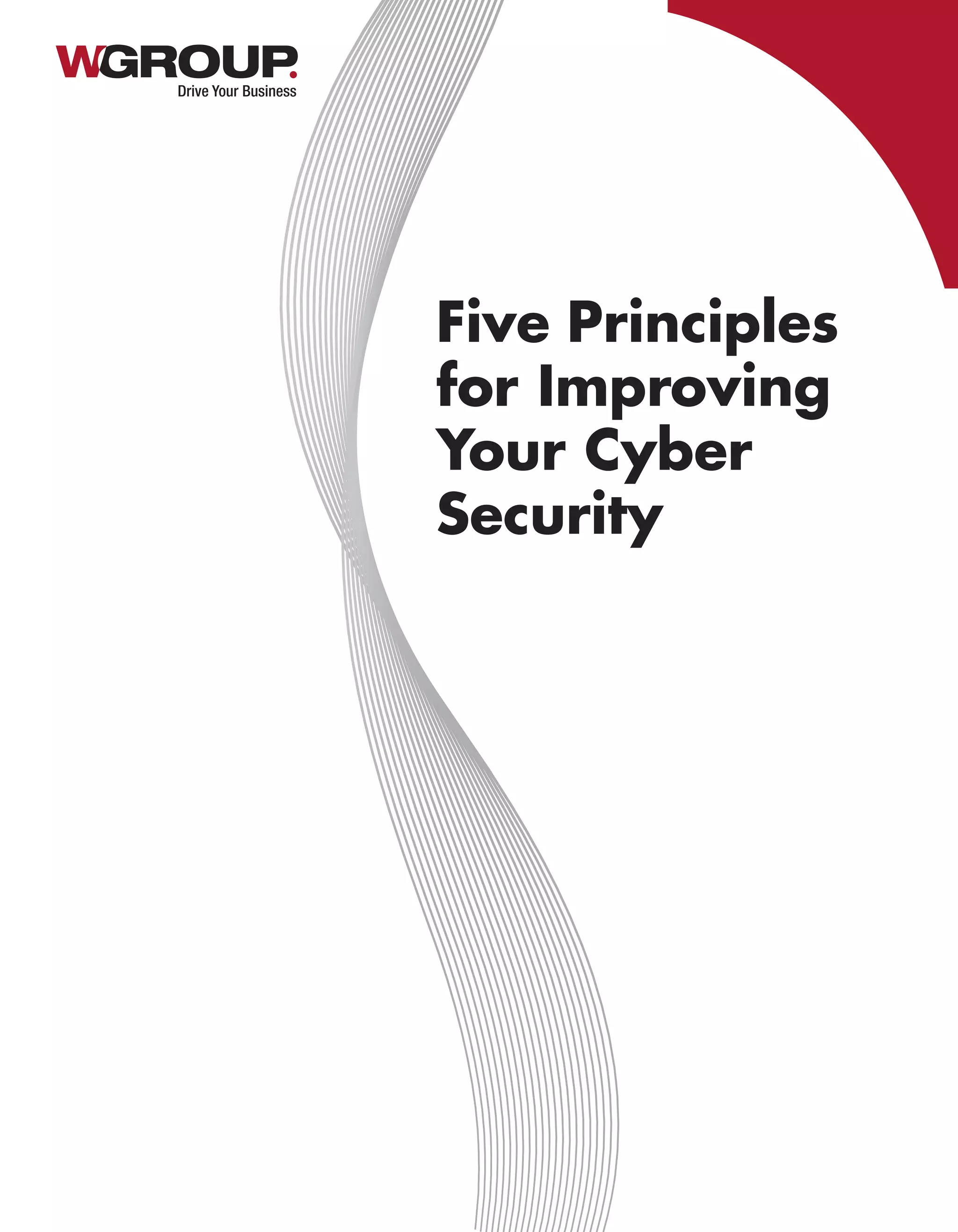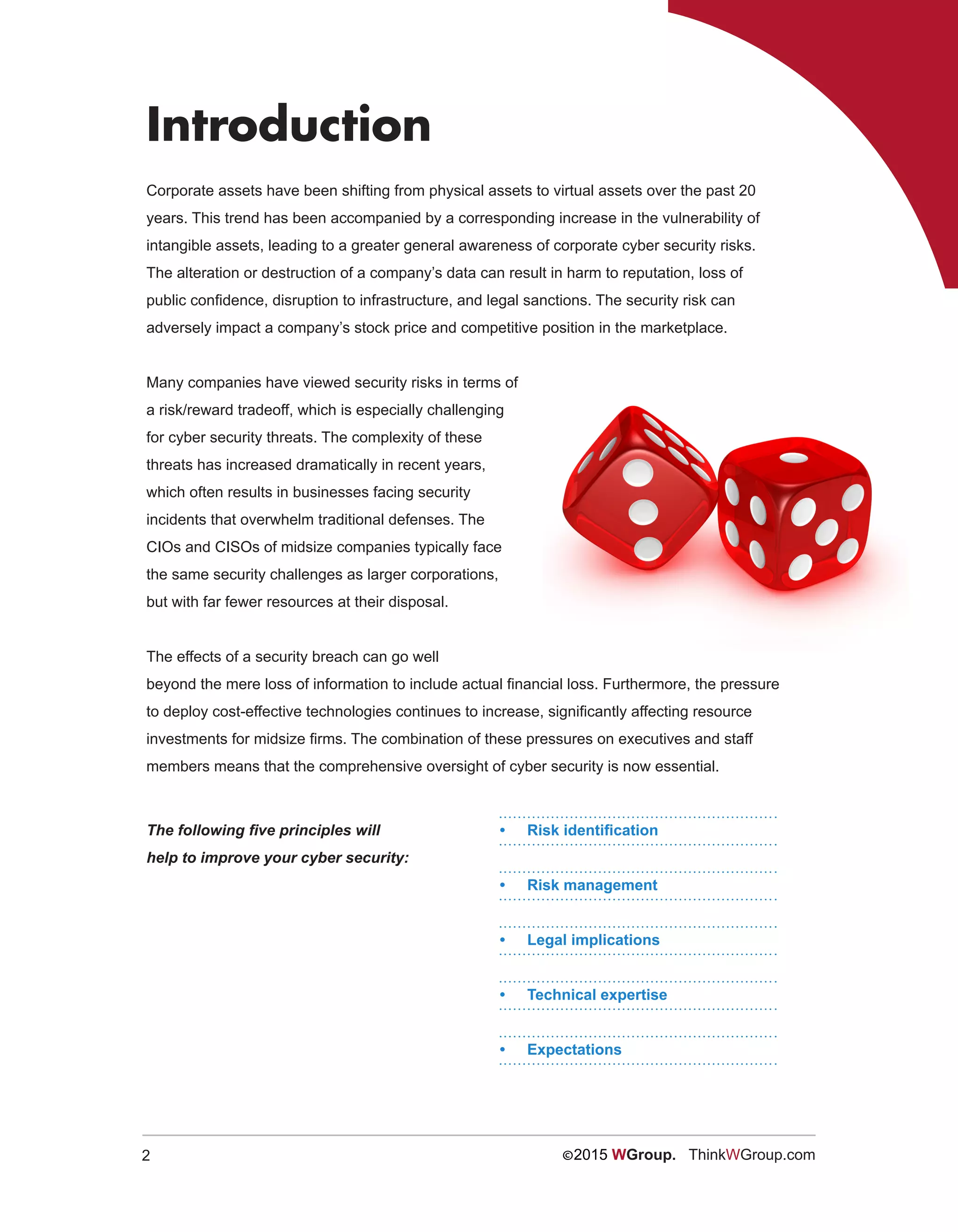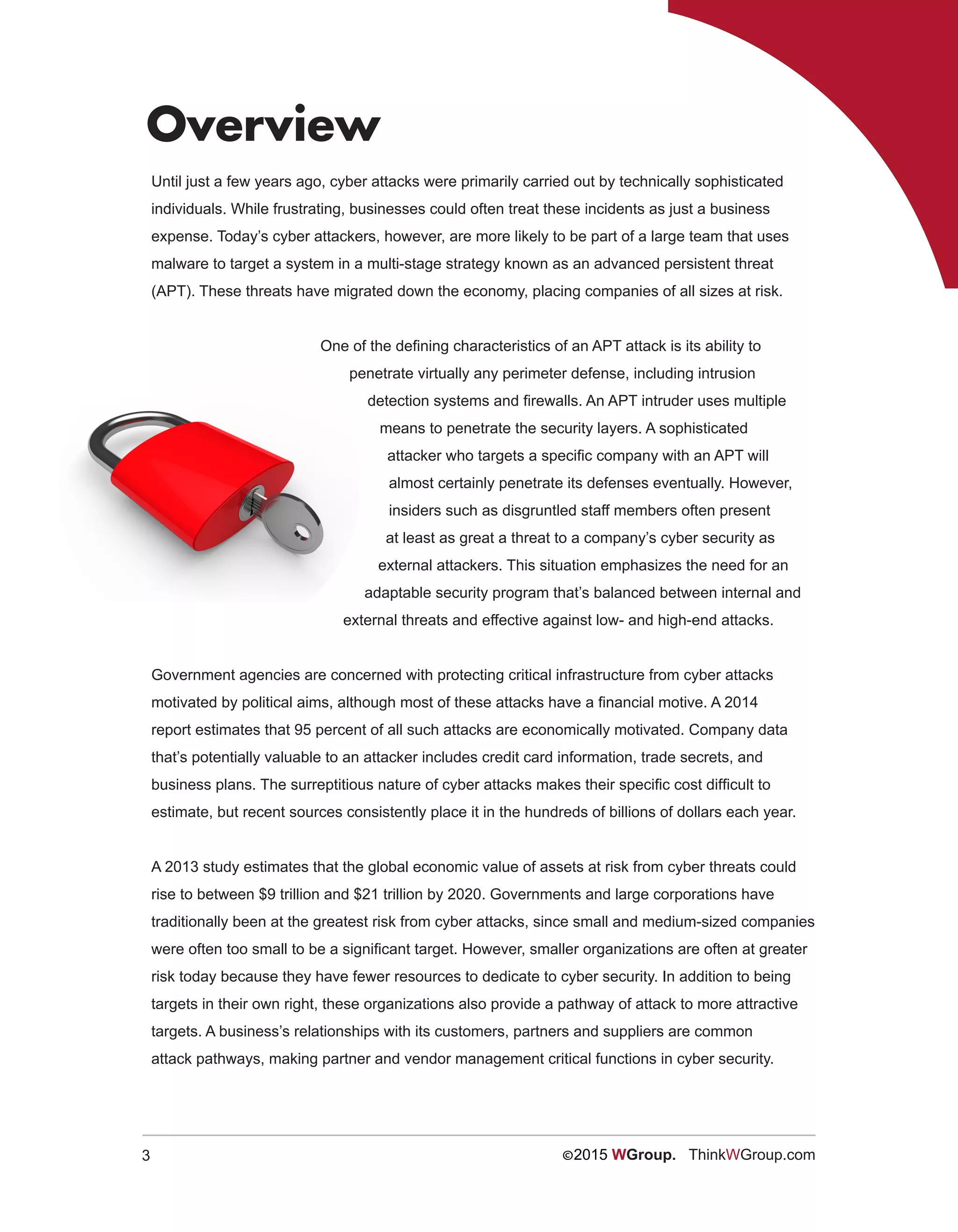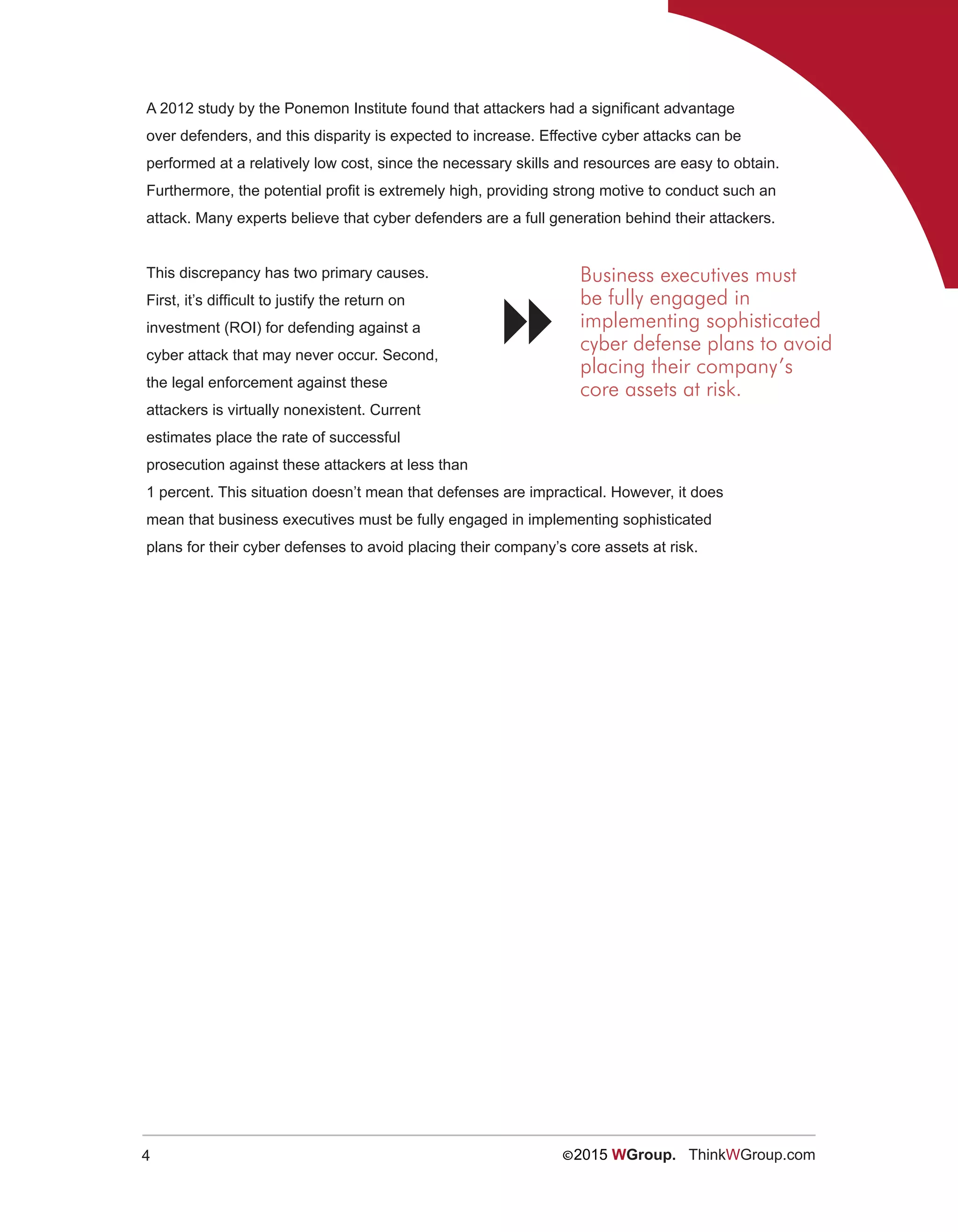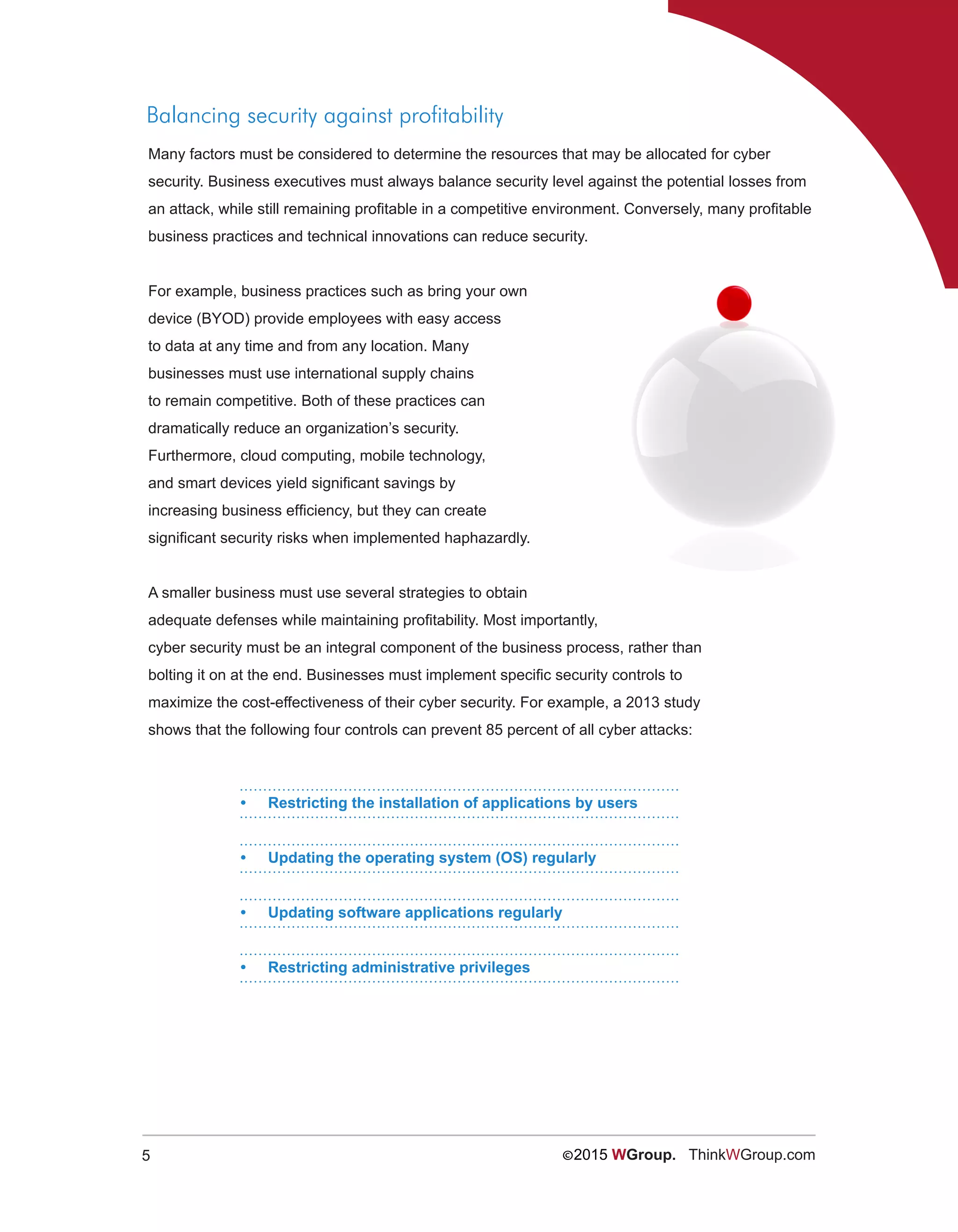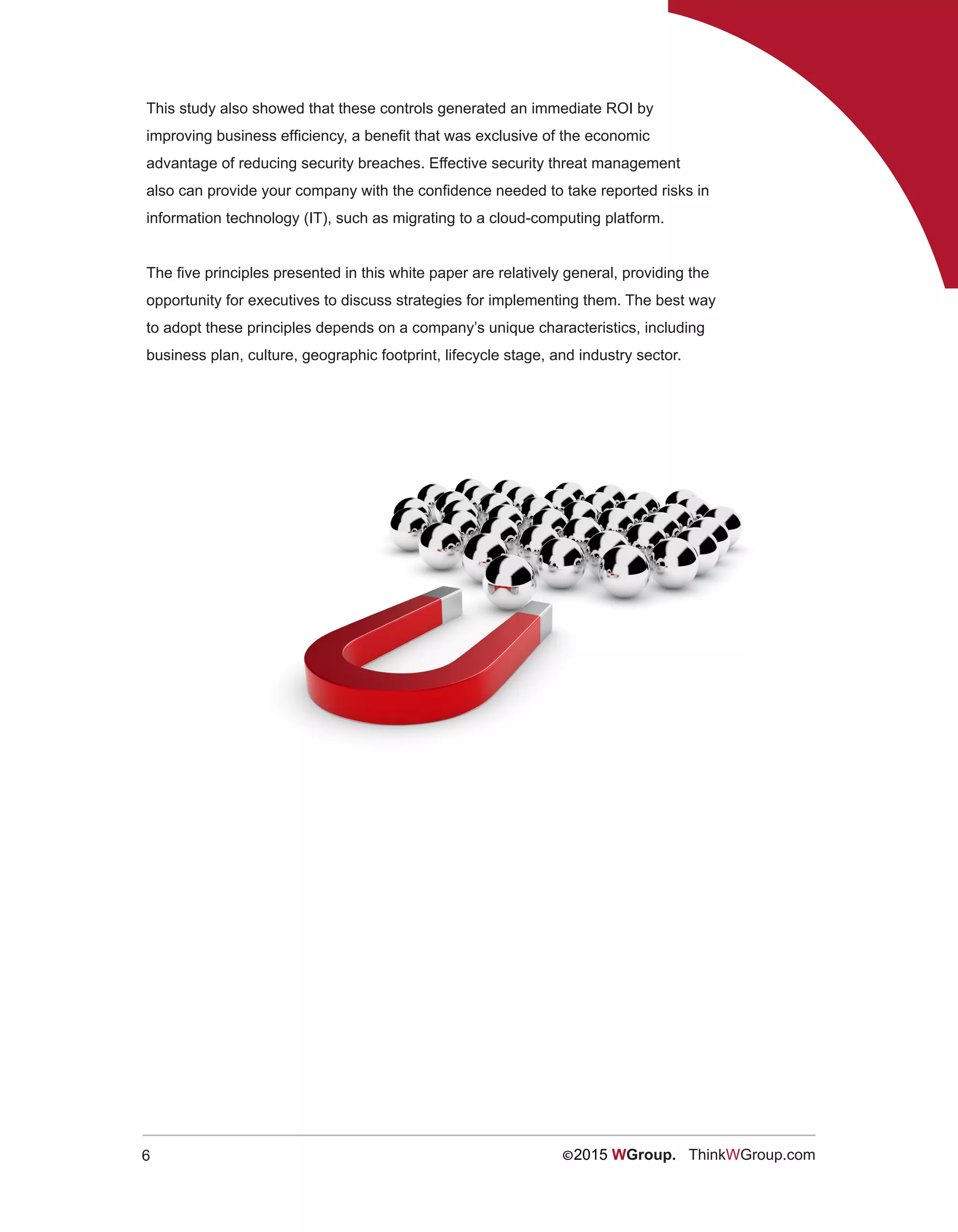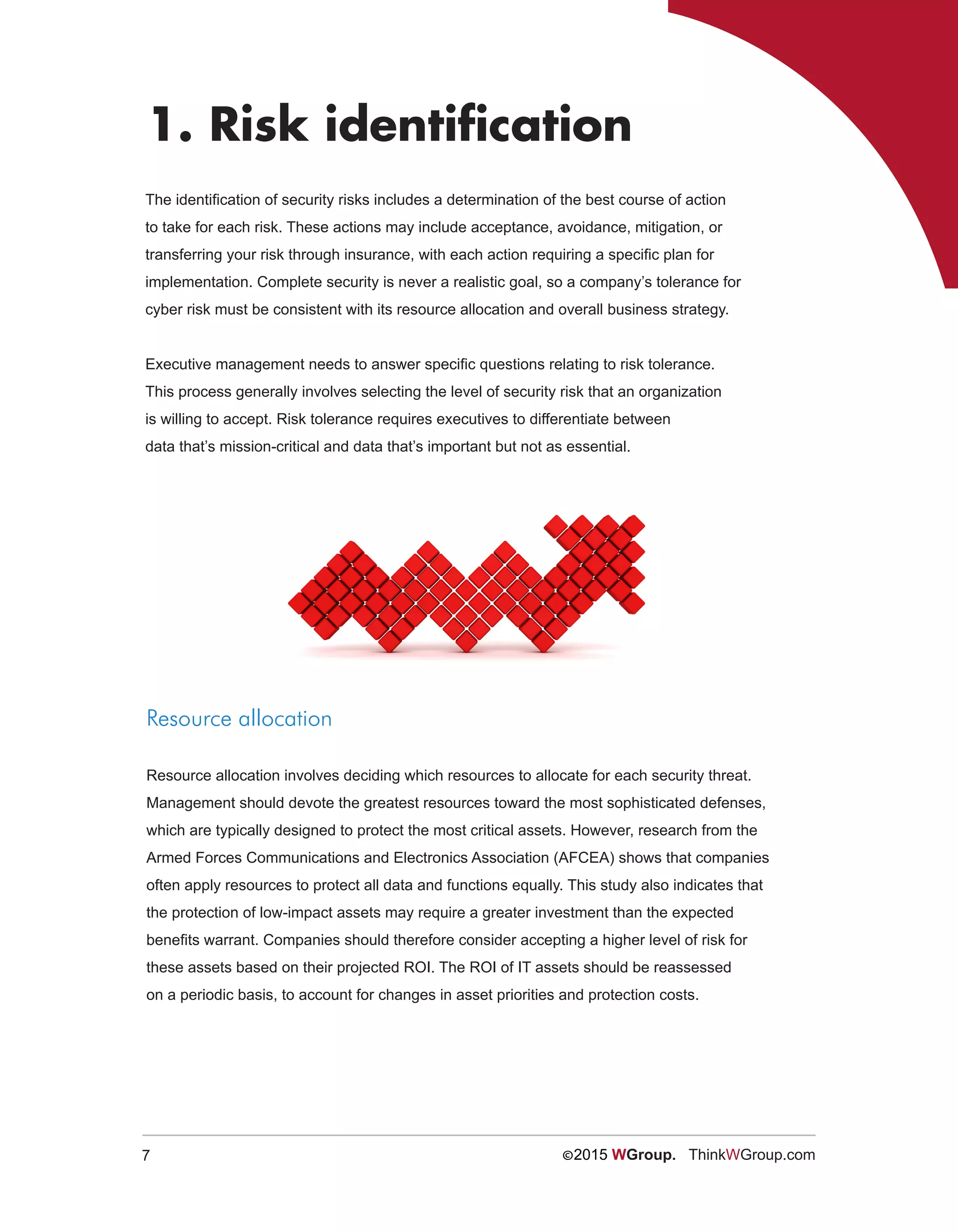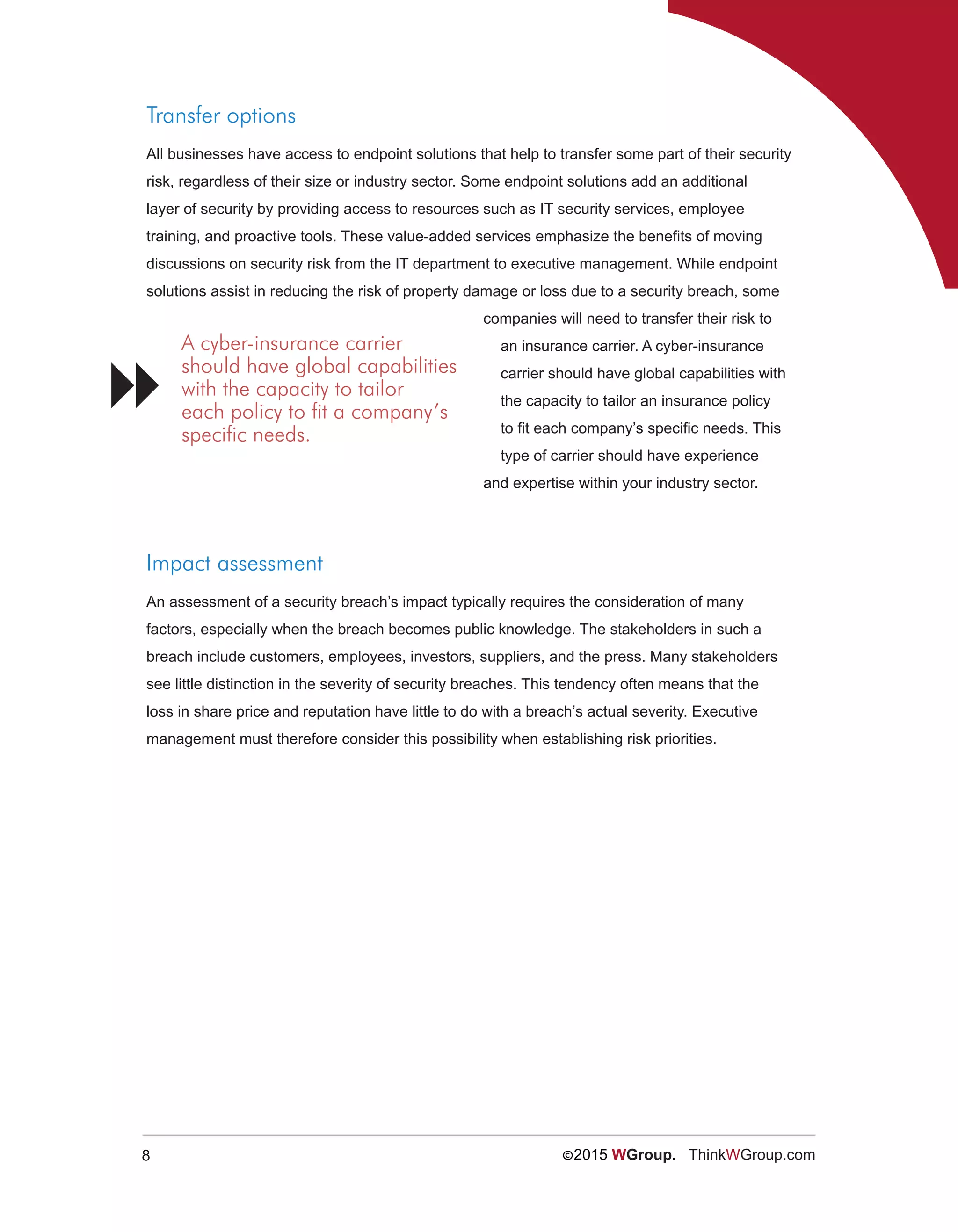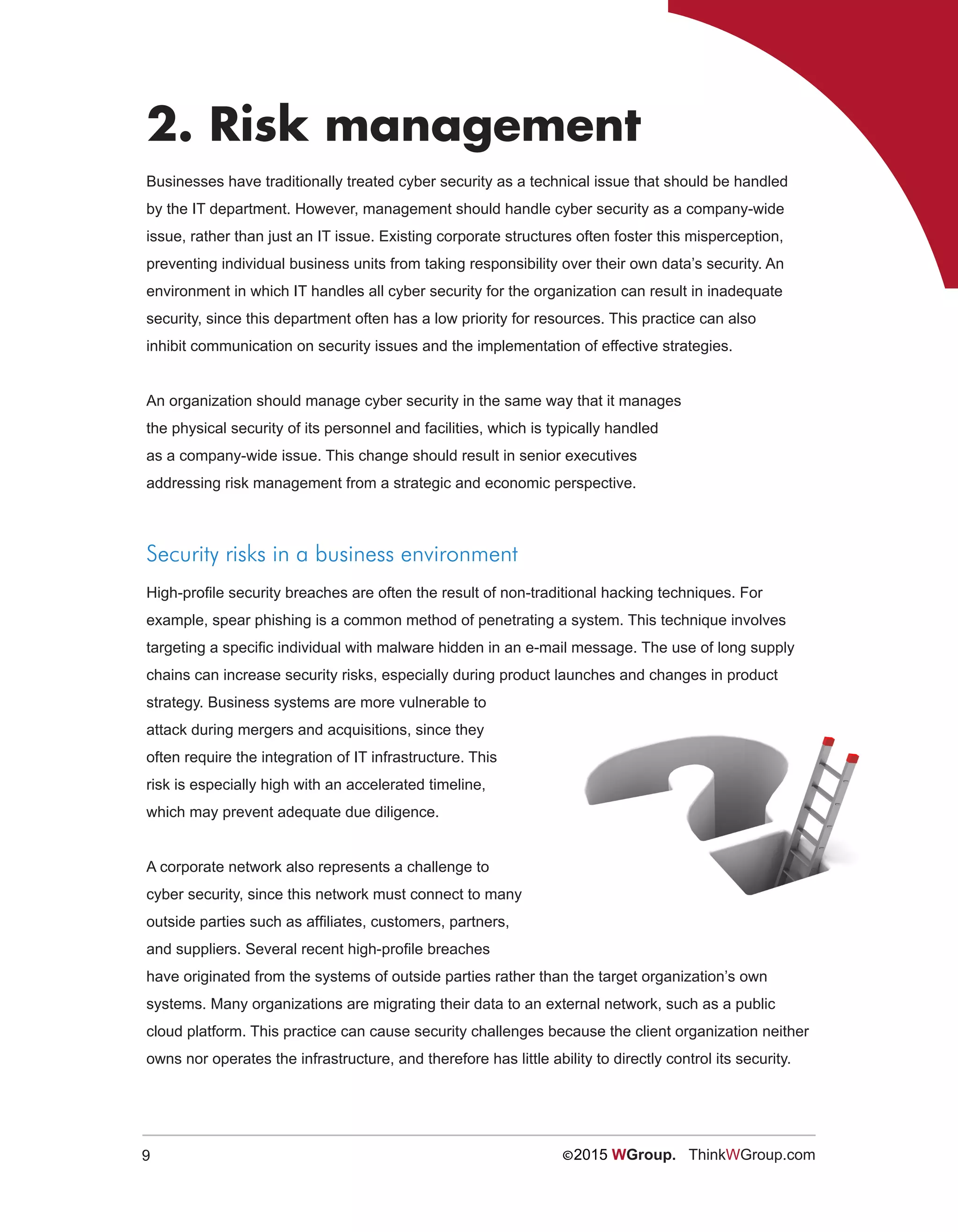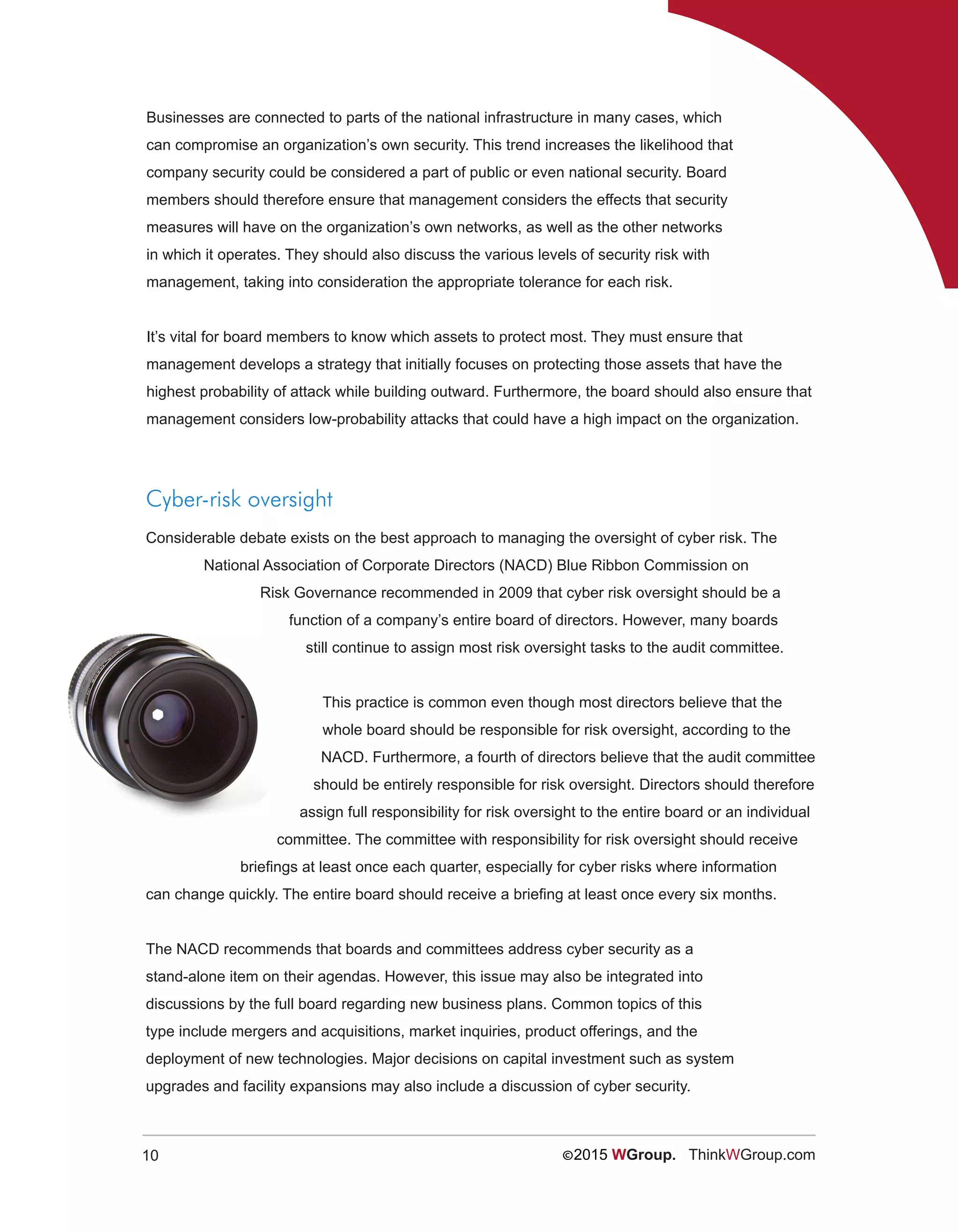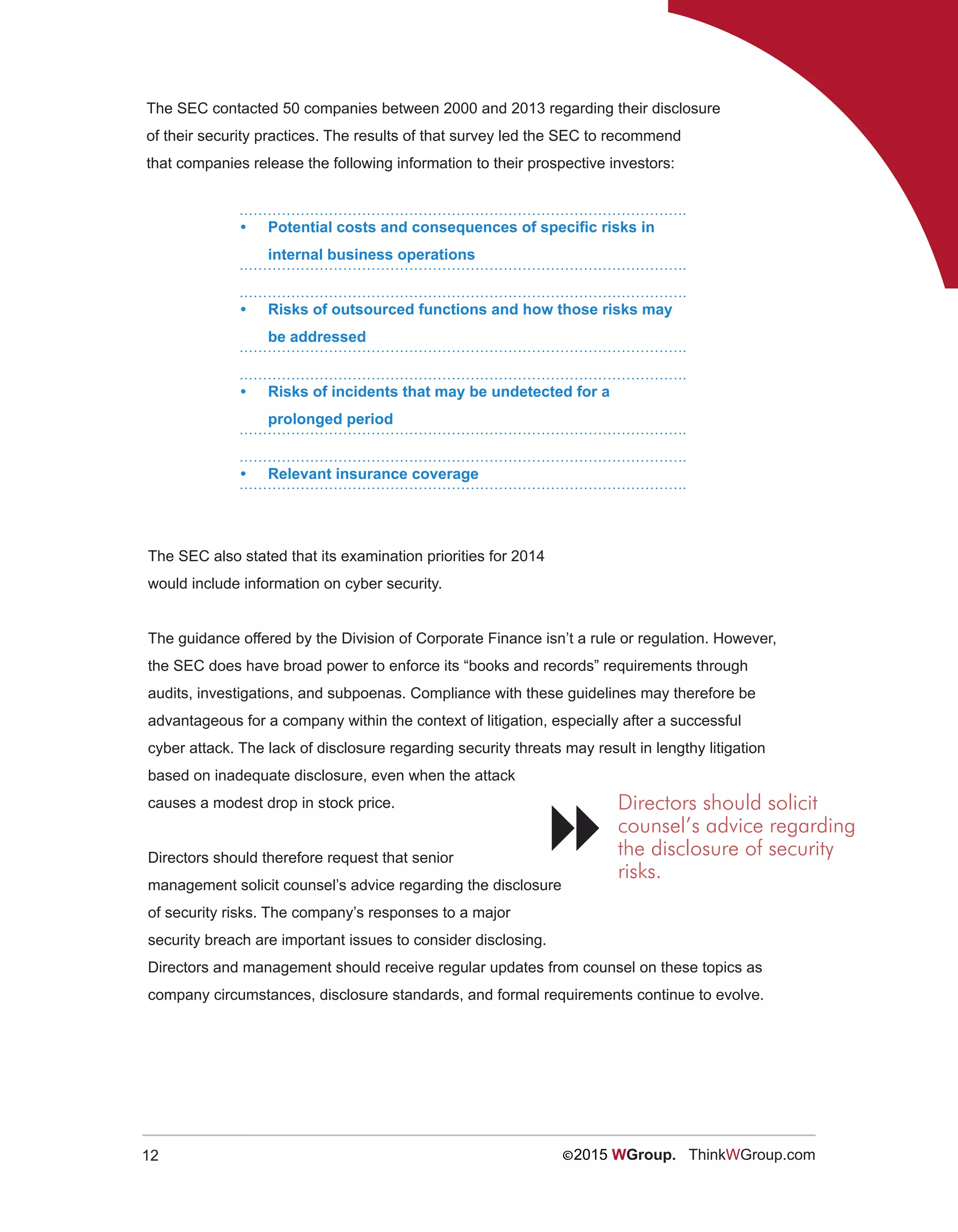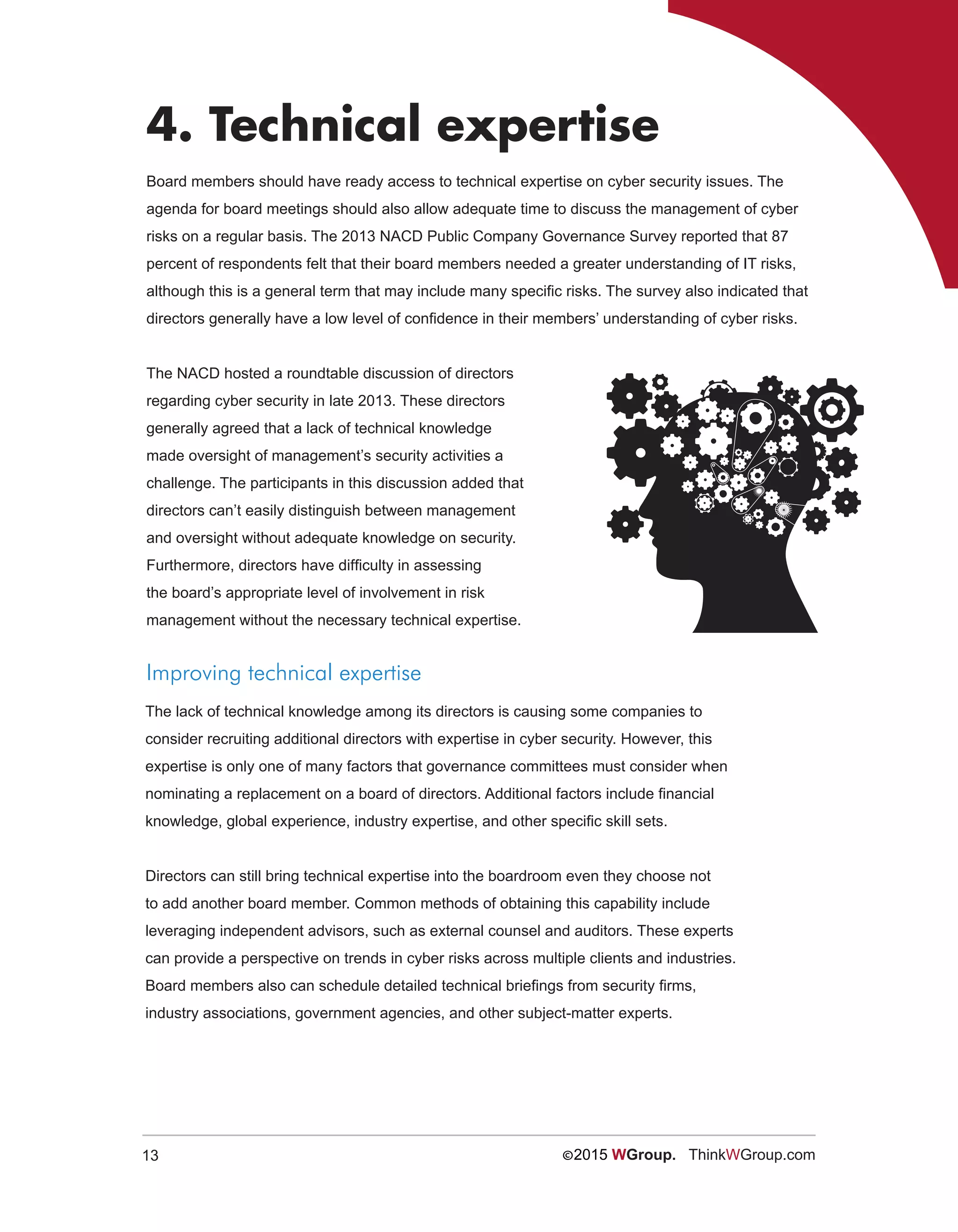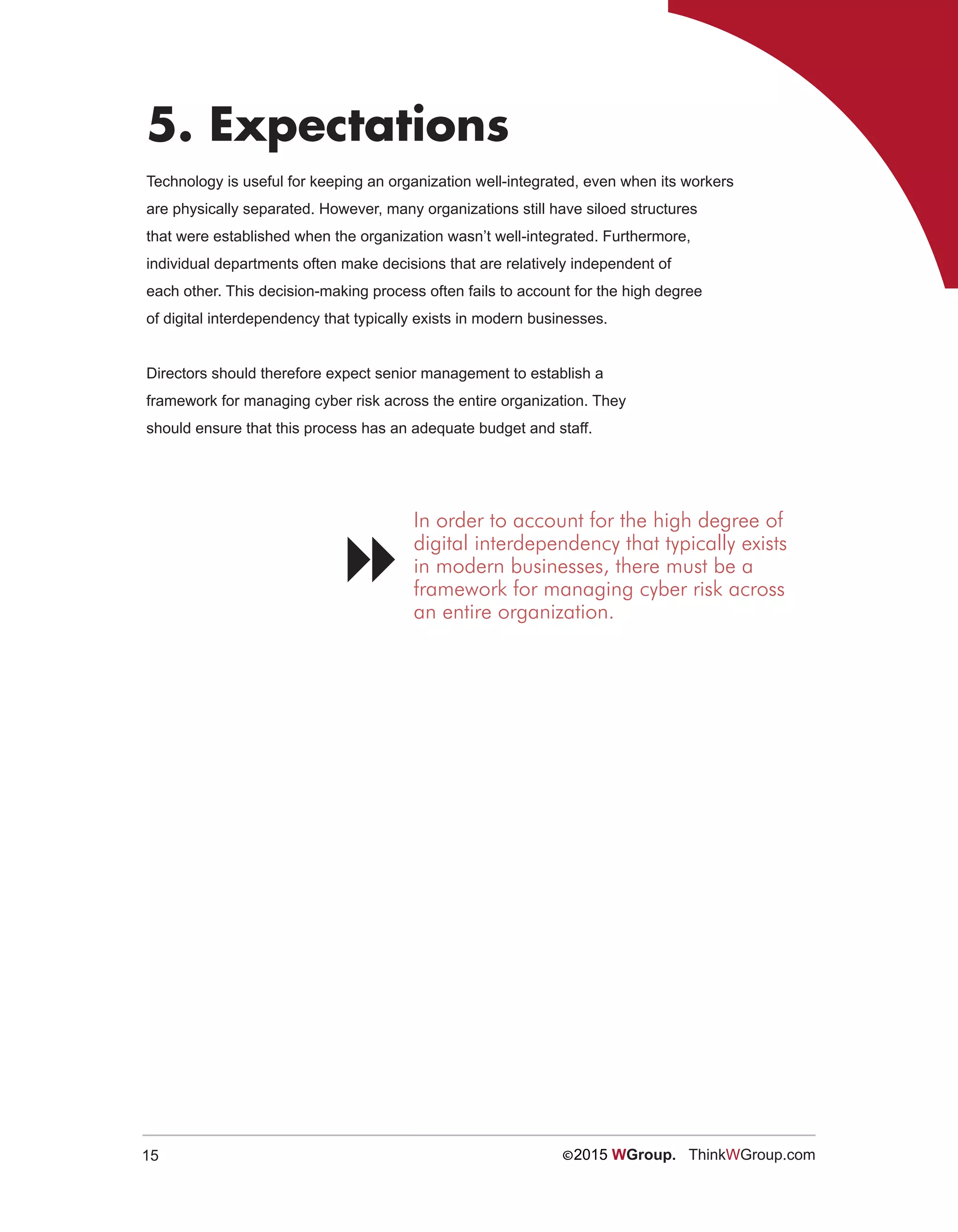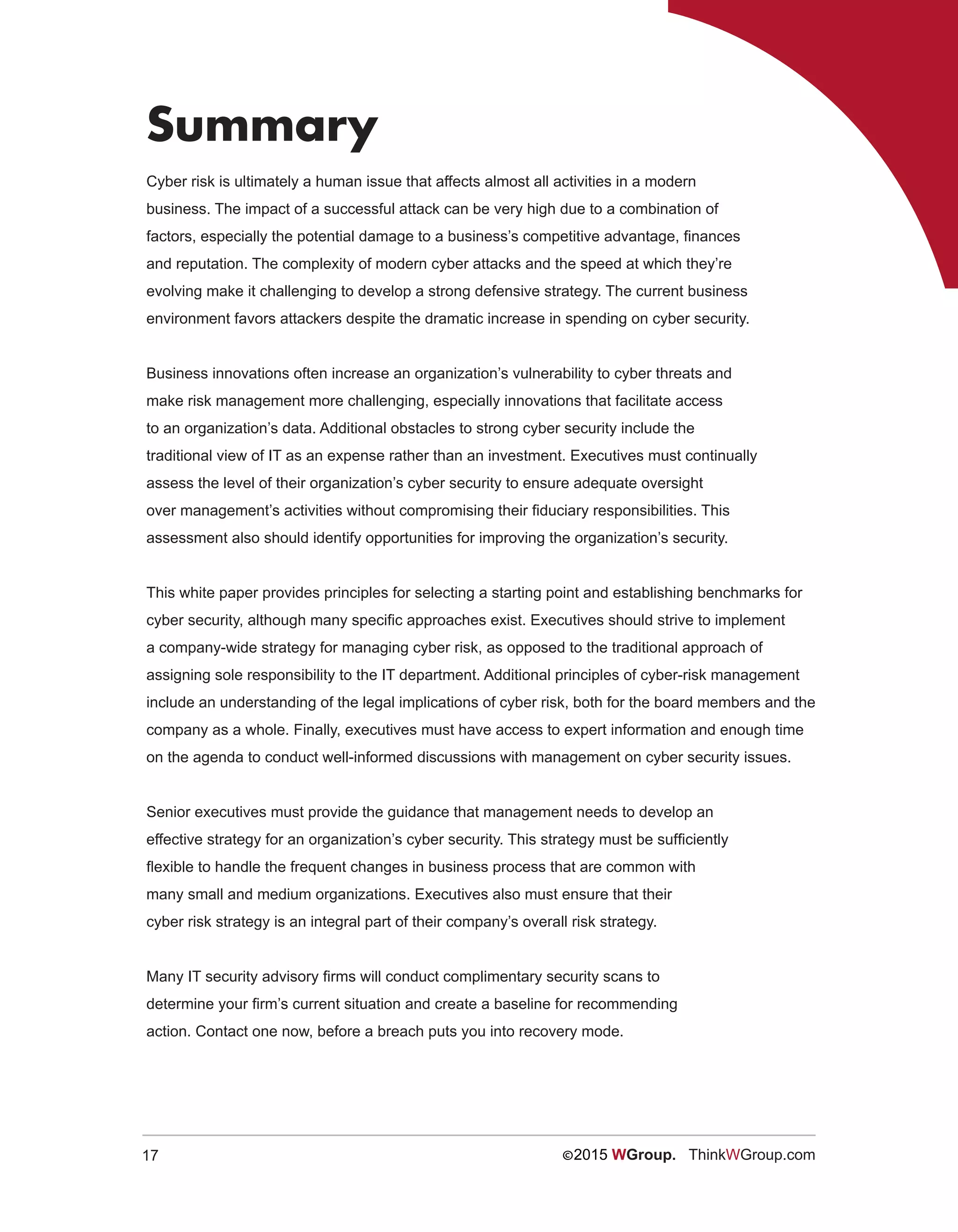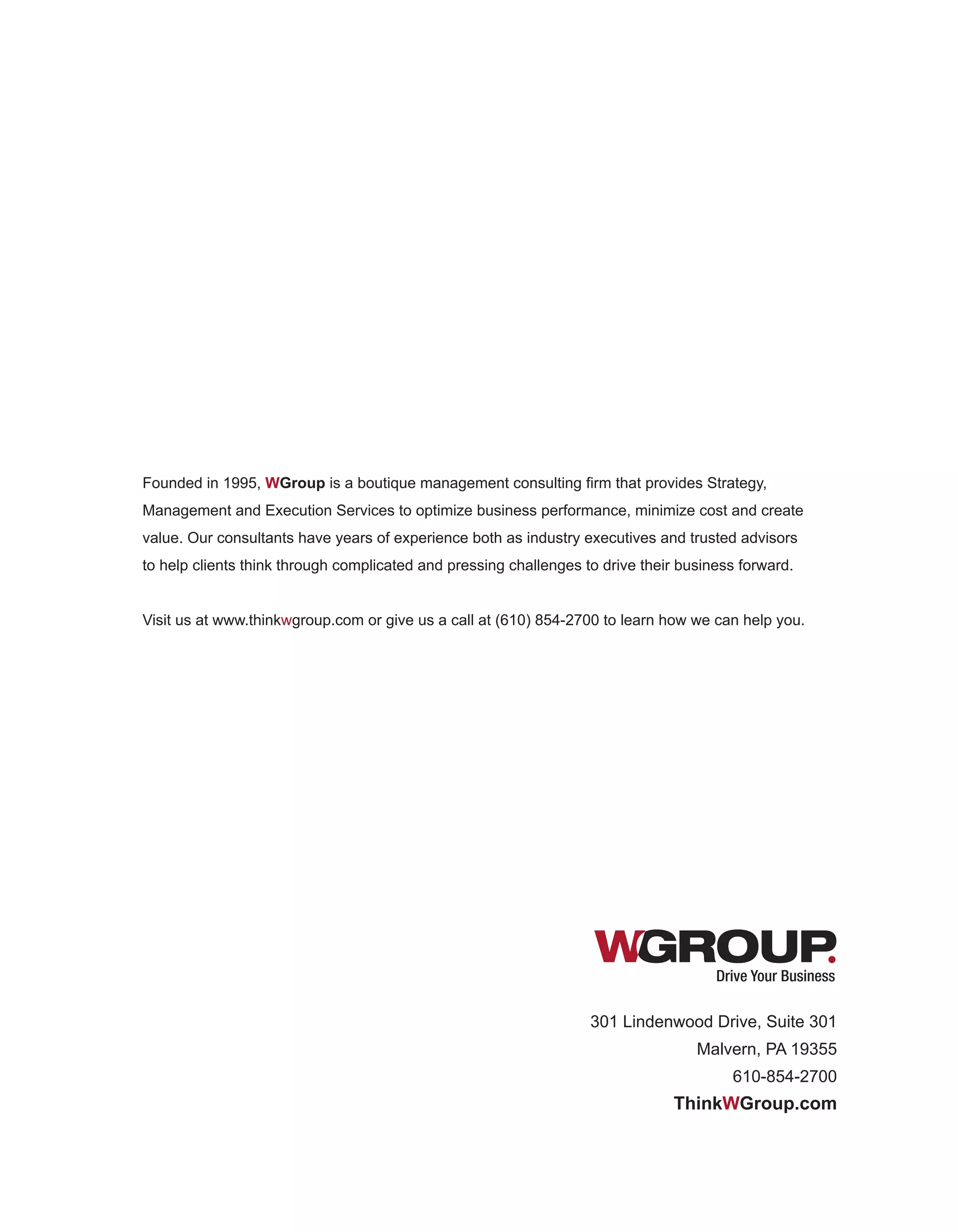The document discusses cyber security risks for businesses and provides five principles for improving cyber security. It notes that as corporate assets have increasingly become virtual, cyber security risks have also increased. The five principles are: 1) Identifying security risks and determining how to address them, 2) Managing risks through resource allocation and transferring risks, 3) Understanding legal implications of breaches, 4) Obtaining technical expertise on security issues, and 5) Having expectations and oversight of the cyber security program.
